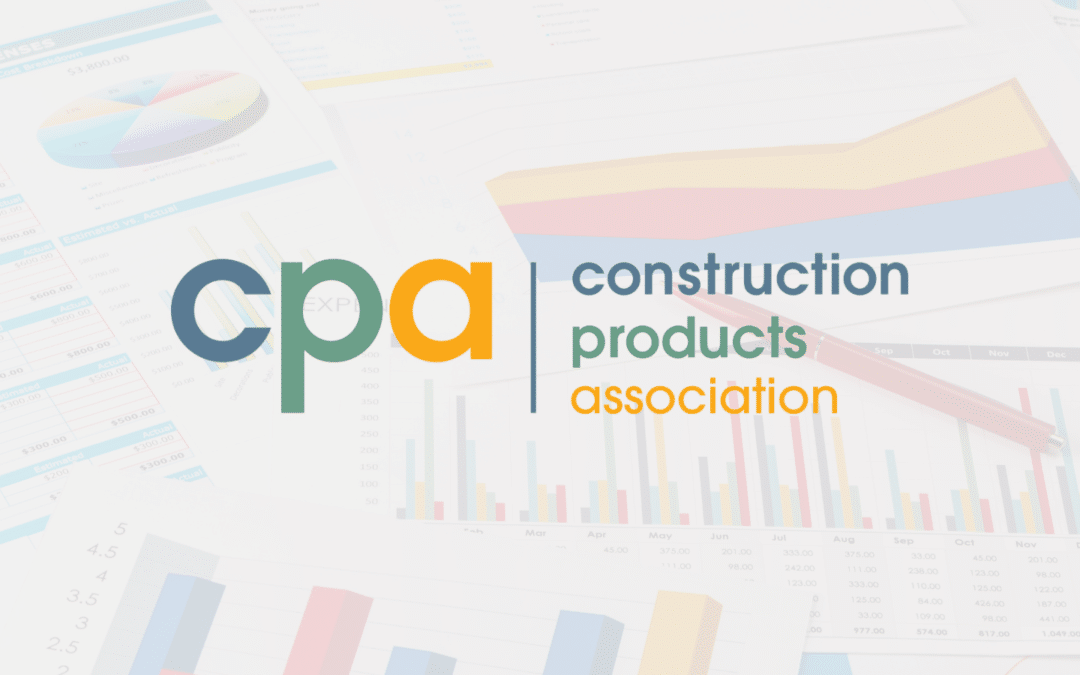
Cost pressures dominate a mixed quarter
Access the full report here
Members can access the full report, produced by the Construction Products Association.

Members can access the full report, produced by the Construction Products Association.

The latest weekly update from CPA is available to members here. The updated issues are in Pages 1-6 of the weekly update whilst subsequent pages have existing data and information that remain relevant. This update includes:
FIS has access to a wide range of market data from sources including the CPA, Barbour ABI and Builders’ Conference. In addition, FIS produces a state of trade survey specifically for the finishes and interiors sector.

Commenting on the figures, FIS CEO Iain McIlwee said:
“On the surface this is encouraging, but we do have to dig behind the numbers. Here we are simply measure the time lag from invoice being raised to invoice being paid. In the modern digital world, there are few excuses for being late. If we look past the numbers we are still seeing applications for payment disputed to slow down the invoice, pressure to accept long payment terms, discounts to pay on time and worse tenders being scattered to trap the unsuspecting in suicide bidding in order to meet unsustainable pricing. These are challenging conditions and the whole supply chain needs to react – some are, but in parts of the market there is little empathy and support for the SMEs in the supply chain.”
Build UK’s payment performance table features more than 100 of the industry’s largest companies, including contractors, clients and housebuilders, to provide a comprehensive picture of payment practices across the construction industry.
All the latest business news can be found in Build UK’s Improving Business Performance update.
FIS is doing some research into procurement – have you say in how tendering, procurement and contractual practices are impacting our market

The latest weekly update from CPA is available to members here. The updated issues are in Pages 1-3 of the weekly update whilst subsequent pages have existing data and information that remain relevant. This update includes:
FIS has access to a wide range of market data from sources including the CPA, Barbour ABI and Builders’ Conference. In addition, FIS produces a state of trade survey specifically for the finishes and interiors sector.

The market has remained bouyant in Q2 2022 with 54% of respondents reporting growth – this is a similar number to reporting same in Q1 2022, but with the vast majority now seeing sales growth in excess of 5%. This is positive, but there has also been an upturn in the number of companies reporting declines of over 5%, up from 15 to 21%, underpinning that the market remains volitile.
The annualised picture also shows that, in terms of volume, the market has been pretty strong, with just 7% of businesses indicating that workload has actually decreased by over 5%. Again anticipated sales are, on the whole, optimistic, with a 67% (down from 75% in the last survey) anticipating growth in sales and 59% reporting an increase in workload in the year ahead (down from 62%).
The key risks to the sector are identified as:

The Construction Products Association (CPA) latest Summer Forecasts are predicting growth in the commercial construction sector continuing to 2024, with warehouses particularly driving the sector forwards.
Prospects for the Housing Sector are, however more subdued with just 1.1% growth predicted for 2022 and a static market expected in 2023.
Forecasts have been revised down across both sectors due to the lagged impact of rising inflation and, consequently, slower economic growth prospects on construction industry demand likely to mean that the industry potentially sees the value of output previously expected but not the volume.
Housing
Overall across the public and private housing market CPA predicts new builds to stabilise at a little over 200,000 houses per year. As economic activity slows, falling consumer confidence and spending, as well as slowing house price growth and the end of Help to Buy in 2023, means that potential homeowners are becoming more risk averse.
Commercial Construction
The CPA report outlines that whilst the pipeline of new towers has improved, they remain a bit thin on the ground compared to historic levels, with concerns around viability linked to inflation and underlying economic conditions potentially causing further delays to planned starts.
Fit-out, however, continues to benefit from the upgrading of existing space and demand for refurbished high-end grade A office space from tenants wishing to downsize to smaller, better quality office space as previous leases finish. The sector is also benefitting from continued changes in use from commercial to residential or warehouses/logistics.
Energy efficiency considerations as part of net zero and corporate Environmental, Social, and Governance (ESG) requirements are also reported to be driving investment and an interesting point, attributed to Savills in the report, is a widening rent differential between grade A space with strong ESG credentials and grade B or C space.
The report does, however repeatedly highlight the huge variance in forecasts seen for the economy that underpin levels of volatility that add to the downside risks.
For warehouses, the ongoing structural shift towards e-commerce will continue to underpin strong demand for warehousing and distribution space, and this has shored up a pipeline of pre-let and speculative work. At the same time, factories construction activity is set to pick up as progress is made on both existing and planned scheme.
Alongside major capital investment in education, facilities to help compete at a global level, universities and private providers are continuing to invest heavily in purpose-built student accommodation, particularly given the strong growth in international (non-EU) students in recent times.
Public Non Housing
A concern is flagged in the report with publicly-funded projects experiencing strong rates of build cost inflation that may lead to delays.
This is a particular risk for larger planned hospital projects that have already experienced a near-doubling in cost estimates, even before the current inflationary pressures. For fixed-price contracts, it may be the case that higher costs mean the value of work is maintained, but volumes decrease.
FIS members can access the latest CPA Forecast.